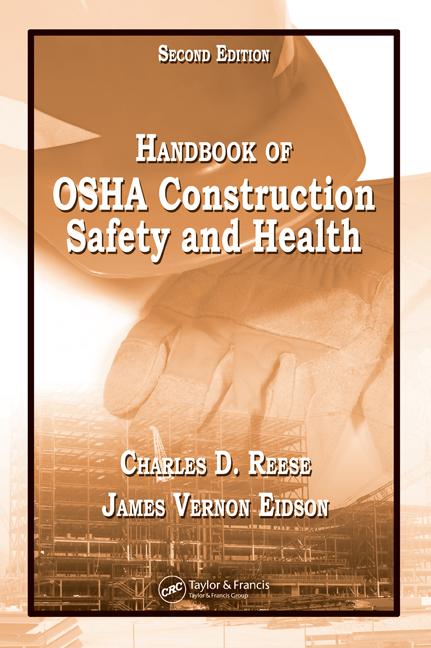Lack of training a common OSHA penalty

OSHA’s many & diverse training requirements
OSHA stated in 1998 that “many standards promulgated by OSHA explicitly require the employer to train employees in the safety and health aspects of their jobs. The length and complexity of OSHA standards may make it difficult to find all the references to training. So, to help employers, safety and health professionals, training directors, and others with a need to know, OSHA’s training-related requirements have been excerpted and collected in a booklet titled, “Training Requirements in OSHA Standards and Training Guidelines.”
Here are OSHA general industry standards that include employee training requirements:
4 Hearing Conservation
? Means of Egress
4 Employee Emergency Plans and Fire Prevention Plans
4 Powered Platforms, Manlifts, and Vehicle-Mounted Work Platforms
4 Powered Platforms for Building Maintenance - Operations-Training
4 DipTanks — Personal Protection, Inspection, Maintenance, and Installation
4 Hearing Protection, Training Program
4 Flammable and Combustible Liquids
4 Explosives and Blasting Agents
4 Bulk Delivery and Mixing Vehicles
4 Storage and Handling of Liquefied Petroleum Gases
4 Process Safety Management of Highly Hazardous Chemicals
4 Contract Employer Responsibilities
4 Mechanical Integrity
4 Hazardous Waste Operations and Emergency Response
4 Hazardous Waste Cleanup Workers
4 New Technology Programs
4 Personal Protective Equipment
4 Respiratory Protection
4 Respiratory Protection for M. Tuberculosis
4 Permit Required Confined Spaces
4 The Control of Hazardous Energy (Lockout/Tagout)
4 Medical Services and First Aid
4 Fire Protection
4 Fire Brigades
4 Portable Fire Extinguishers
4 Fixed Extinguishing Systems
4 Fire Detection Systems
4 Employee Alarm Systems
4 Servicing of Multi-Piece and Single-Piece Rim Wheels
4 Powered Industrial Trucks
4 Moving the Load
4 Crawler Locomotives and Truck Cranes
4 Mechanical Power Presses - Instructions to Operators
4 Training of Maintenance Personnel
4 Operator Training
4 Forging Machines
4 Welding, Cutting, and Brazing
4 Oxygen - Fuel Gas Welding and Cutting
4 Arc Welding and Cutting
4 Resistance Welding
Special Industries
4 Pulp, Paper, and Paperboard Mills
4 Laundry Machinery and Operating Rules
4 Sawmills
4 Logging
4 Telecommunications
4 Derrick Trucks
4 Cable Fault Locating
4 Guarding Manholes
4 Joint Power and Telecommunication Manholes
4 Tree Trimming - Electrical Hazards
4 Electric Power Generation, Transmission, and Distribution
4 Grain Handling Facilities
4 Entry Into Bins, Silos, and Tanks
4 Contractors
4 Electrical Safety-Related Work Practices
4 Commercial Diving Operations
Toxic and Hazardous Substances
4 Asbestos
4 4-Nitrobiphenyl
4 Alpha-Naphthylamine
4 Methyl Chloromethyl Ether
4 3, 3’-Dichlorobenzidine (and its salts)
4 Bis-Chloromethyl Ether
4 Beta-Napthylamine
4 Benzidine
4 4-Aminodiphenyl
4 Ethyleneimine
4 Beta-Propiolactone
4 2-Acetylaminofluorene
4 4-Dimethylaminoazobenzene
4 N-Nitrosodimethylamine
4 Vinyl Chloride
4 Inorganic Arsenic
4 Lead
4 Cadmium
4 Benzene
4 Coke Oven Emissions
4 Bloodborne Pathogens
4 Cotton Dust
4 1,2-Dibromo-3-Chloropropane
4 Acrylonitrile (Vinyl Cyanide)
4 Ethylene Oxide
4 Formaldehyde
4 4, 4’ Methylenedianiline
4 Ionizing Radiation Testing
4 Hazard Communication
4 Occupational Exposure to Hazardous Chemicals in Laboratories
Note: OSHA has issued standards since the 1998 training guide book was published that contain training requirements. For updates, consult your closest federal OSHA area office, search the federal OSHA website, or consult you State OSHA Plan program.
Training temporary workers
In 2014, a top OSHA priority is protecting the safety of the increasing numbers of temporary workers used by host employers.
States the agency: “OSHA has concerns that some employers may use temporary workers as a way to avoid meeting all their compliance obligations under the OSH Act and other worker protection laws; that temporary workers get placed in a variety of jobs, including the most hazardous jobs; that temporary workers are more vulnerable to workplace safety and health hazards and retaliation than workers in traditional employment relationships; that temporary workers are often not given adequate safety and health training or explanations of their duties by either the temporary staffing agency or the host employer. Therefore, it is essential that both employers comply with all relevant OSHA requirements.
In 2013, the agency stated: “In recent months, OSHA has received a series of reports about temporary workers suffering fatal injuries – many during their first days on a job. OSHA has issued citations when the employer failed to provide adequate protections, including safety training.
And OSHA stressed: “Host employers must treat temporary workers like any other workers in terms of training and safety and health protections.”
OSHA voluntary training guidelines
OSHA’s training guidelines follow a model that consists of:
-Determining if Training is Needed
-Identifying Training Needs
-Identifying Goals and Objectives
-Developing Learning Activities
-Conducting the Training
-Evaluating Program Effectiveness
-Improving the Program
Identifying employees at risk
According to OSHA’s voluntary guidelines: “One method of identifying employee populations at high levels of occupational risk (and thus in greater need of safety and health training) is to pinpoint hazardous occupations. Even within industries which are hazardous in general, there are some employees who operate at greater risk than others. In other cases the hazardousness of an occupation is influenced by the conditions under which it is performed, such as noise, heat or cold, or safety or health hazards in the surrounding area. In these situations, employees should be trained not only on performing their job safely but also on how to operate within a hazardous environment.
“A second method of identifying employee populations at high levels of risk is to examine the incidence of accidents and injuries, both within the company and within the industry. If employees in certain occupational categories are experiencing higher accident and injury rates than other employees, training may be one way to reduce that rate. In addition, thorough accident investigation can identify not only specific employees who could benefit from training but also identify company-wide training needs.
“Research has identified the following variables as being related to a disproportionate share of injuries and illnesses at the worksite on the part of employees:
1. The age of the employee (younger employees have higher incidence rates).
2. The length of time on the job (new employees have higher incidence rates).
3. The size of the firm (in general terms, medium-size firms have higher incidence rates than smaller or larger firms).
4. The type of work performed (incidence and severity rates vary significantly by SIC Code).
5. The use of hazardous substances (by SIC Code).
“These variables should be considered when identifying employee groups for training in occupational safety and health.”
From federal OSHA’s enforcement archives:
? • Vienna Beef Ltd. has been cited by OSHA for 10 serious safety violations with proposed fines of $53,000. The 10 serious safety violations include failing to train and evaluate powered industrial vehicle operators…
? • OSHA has cited Precision Production Inc., a manufacturer of fabricated components in Cleveland, with 15 alleged safety violations. The company faces penalties totaling $149,250. As a result of an inspection by OSHA, the company was issued four willful citations with proposed fines of $140,000 for failing to train workers on recognizing hazardous energy sources and control methods… Precision Production Inc. also received 10 serious citations with proposed penalties of $9,250. Alleged violations include failing to develop training programs for working with hazardous chemicals and train workers in the use and wear of personal protective equipment
? • OSHA has cited Tribe Mediterranean Foods, a subsidiary of Nestle SA, that manufactures Tribe brand hummus products, for 18 alleged violations of workplace safety standards following the death of a worker at its Taunton, Mass. production plant. OSHA’s investigation found that Tribe Mediterranean Foods had not trained the deceased worker and six other workers who cleaned plant machinery on hazardous energy control or “lockout/tagout” procedures.
• OSHA has issued serious and repeat citations to Home Depot U.S.A. Inc. at 9115 North Loop 1604 in San Antonio... Proposed penalties total $70,500. OSHA began its inspection on July 30, which found that an employee had sustained chemical burns due to lack of appropriate personal protective equipment and training for protective equipment.
• OSHA proposes more than $250,000 in fines against two employers following an explosion at Nashua, NH, manufacturing plant… S.L. Chasse was cited for inadequately training its workers to recognize potential chemical, fire, explosion or toxic release hazards and appropriate protective work practices.
• OSHA has cited American Showa Inc. with 13 safety and health violations – including failing to train workers to recognize unsafe electrical work practices. Proposed fines total $151,300.
• OSHA proposes $101,000 in fines to Michigan-based Kamps Inc. for a lack of a hearing conservation program at an Ohio wood pallet plant… one serious health violation is failing to provide workers with hearing conservation training.
It’s obvious from these enforcement actions that training violations cover a wide range of topics, from hearing conservation and electrical work practices to PPE training and lockout-tagout training.
Looking for a reprint of this article?
From high-res PDFs to custom plaques, order your copy today!






